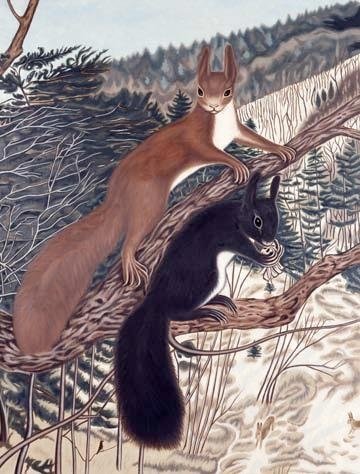Two exhibitions
dal 4/5/2010 al 25/6/2010
Segnalato da
4/5/2010
Two exhibitions
Swiss Institute - Old location, New York
Painting and Misappropriation presents works by Adolf Dietrich and Richard Phillips. Dietrich is characterized as one of the leading Swiss painters of the 20th century and controversially also as naive artist. Phillips by contrast is a contemporary painter, who pushes the medium to its limits by choice of controversial themes. Arnold Odermatt became famous for the publication of Karambolage, his photographic journal about the traffic accidents that were part of his professional life in the Swiss canton of Nidwalden.

Adolf Dietrich - Richard Phillips Painting and Misappropriation
Swiss Institute is pleased to present an exhibition pairing historical paintings by the late
Swiss artist Adolf Dietrich ( 1 8 7 7 – 1 9 5 7 , l i v e d i n B e r l i n g e n ) with recent paintings by
American artist Richard Phillips (1964, lives in New York). The encounter results in a
complex, multi-layered dialogue beyond categorizations.
Adolf Dietrich is characterized as one of the leading Swiss painters of the 20th century and controversially
also as naïve artist. Richard Phillips by contrast is a contemporary painter, who pushes the medium to its
limits by choice of controversial themes, a unique painting style as well as by the sheer intensity of his
gigantic compositions.
Introduced to Dietrich’s work in 2003 Phillips was deeply touched by the self-consciousness of artistic
manipulation of his elder colleagues’ nature scenes. Phillips re-interpreted a 1939 Dietrich painting
entitled “Two Squirrels in Landscape” as part of a series on national representation. With “Similar to
Squirrels after A. Dietrich” Phillips introduced the Swiss painter into a contemporary discourse. By re-
enacting Dietrich’s painterly vision the new painting functions as a fourth-dimensional mirror. To hang the
similar, yet very different canvases for the first time on one and the same wall neutralizes the act of
appropriation and prompts new readings, questioning the construction of historical classification.
To paint after Adolf Dietrich was only the beginning of Richard Phillips’ ongoing involvement with the work
of the Swiss artist, whom immodestly considered himself as “master painter” and proudly shared the
same initials with Albrecht Dürer. For Swiss art magazine Parkett Phillips wrote the first English text ever
on Dietrich entitled “Misappropriation: In Defense of the Real Adolf Dietrich”. Phillips concludes that
Dietrich has been misappropriated as naïve artist: “While it was made in a rural setting and in the midst
of great hardship, Dietrich’s art is still an important achievement of modern art from that time and
was only, in fact, marginalized by the efforts of a few.“
In recent paintings Phillips uses fragments of Dietrich’s images to create dramatic offsets. The backdrop
in “Message Force Multiplier” is from Dietrich’s frozen lake series, a theme that the Swiss painter
repeatedly painted to the point where it was seen as a statement of his own sensitivities. The symbolic
reading of alienation, frozen despair, and loneliness undermines the fierce expression of the male model
from a marine’s recruitment ad. Phillip’s painting “Libertas” re-interprets a red-clouded sky from the 1918
canvas “Abend am Untersee” that evokes the burning ruins of WW I on the German shore of Lake
Constance, the waters where Dietrich spent his entire life. In the foreground we encounter the mug shot of
a German double agent, Libertas Schulze-Boysen, who eventually was executed by the Nazis for her
collaboration with the resistance. Phillips’ two paintings are an elliptical completion of falsehood of valor,
from negative to positive, from true to false, from play-acting to self-sacrifice.
Using the words of Richard Phillips, an exhibition that does not address the critical situation of today’s
world becomes “paintertainment”. Part of the process is to untiringly challenge the controversial potential
of imagers. On one hand Phillips destabilizes Dietrich as a naïve painter and establishes the elder artist
as a precursor to modernism, being self-aware of his compulsive, repetitive paintings. On the other hand
he honors the work as being strong enough to challenge contemporary art.
The juxtaposition of “Painting and Misappropriation” is one of difference and affinity. Dietrich and Phillips
share the same subjects like animals, portraits, and landscapes while both enhance figuration
stylistically to a degree of artificiality that goes far beyond the depiction of reality.
Curated by Richard Phillips and Gianni Jetzer, the show will be shown in 2011 at Kunstmuseum Thurgau, Kartause Ittingen.
A catalogue will be published in June 2010 with texts by Richard Phillips, Beatrix Ruf, Gianni Jetzer, Dorothee Messmer and
Markus Landert. Design by Li Inc.
.................................
Arnold Odermatt
Police officer and photographer Arnold Odermatt (born 1925 in Oberdorf, Canton Nidwalden) became famous in his retirement on the publication of Karambolage, his photographic journal about the traffic accidents that were part of his professional life in the Swiss canton of Nidwalden.
The show will contain three publications by Steidl edited by Urs Odermatt, the son of the retired police photographer as well as 3 color and 6 b/w original prints.
For additional information or image material please contact Gianni Jetzer, jet@swissinstitute.net
Image: Adolf Dietrich, Two Squirrels in Landscape, 1939, Oil on Cardboard, 24" x 17", Private Collection
Opening Wednesday May 5 2010, at 6 pm
Swiss Institute
495 Broadway, New York USA
Hours: Tuesday through Saturday: 12 - 6 pm
Free entry



